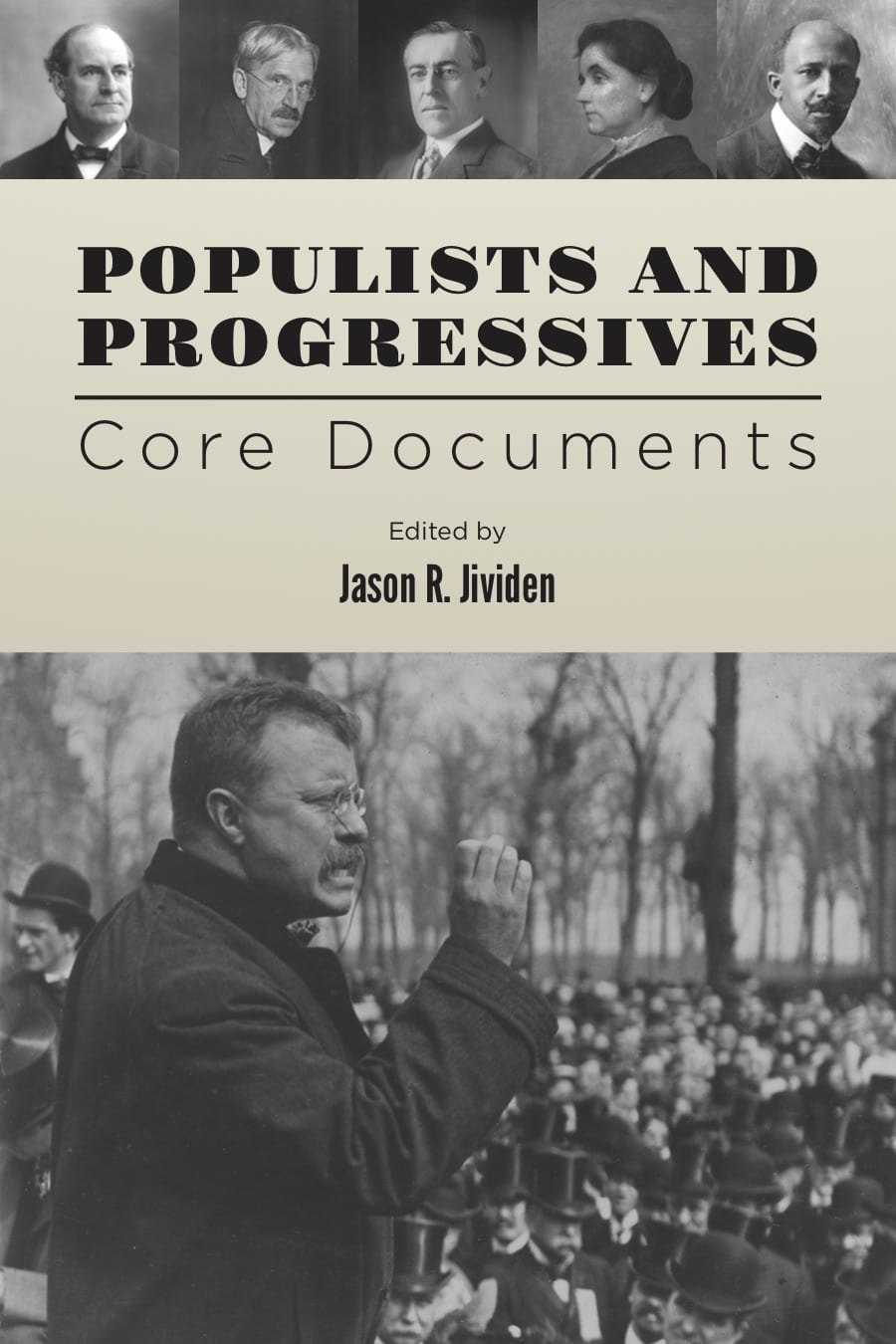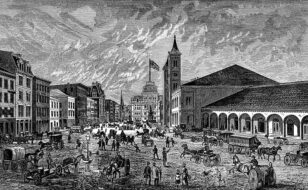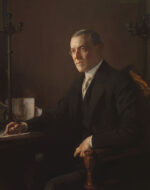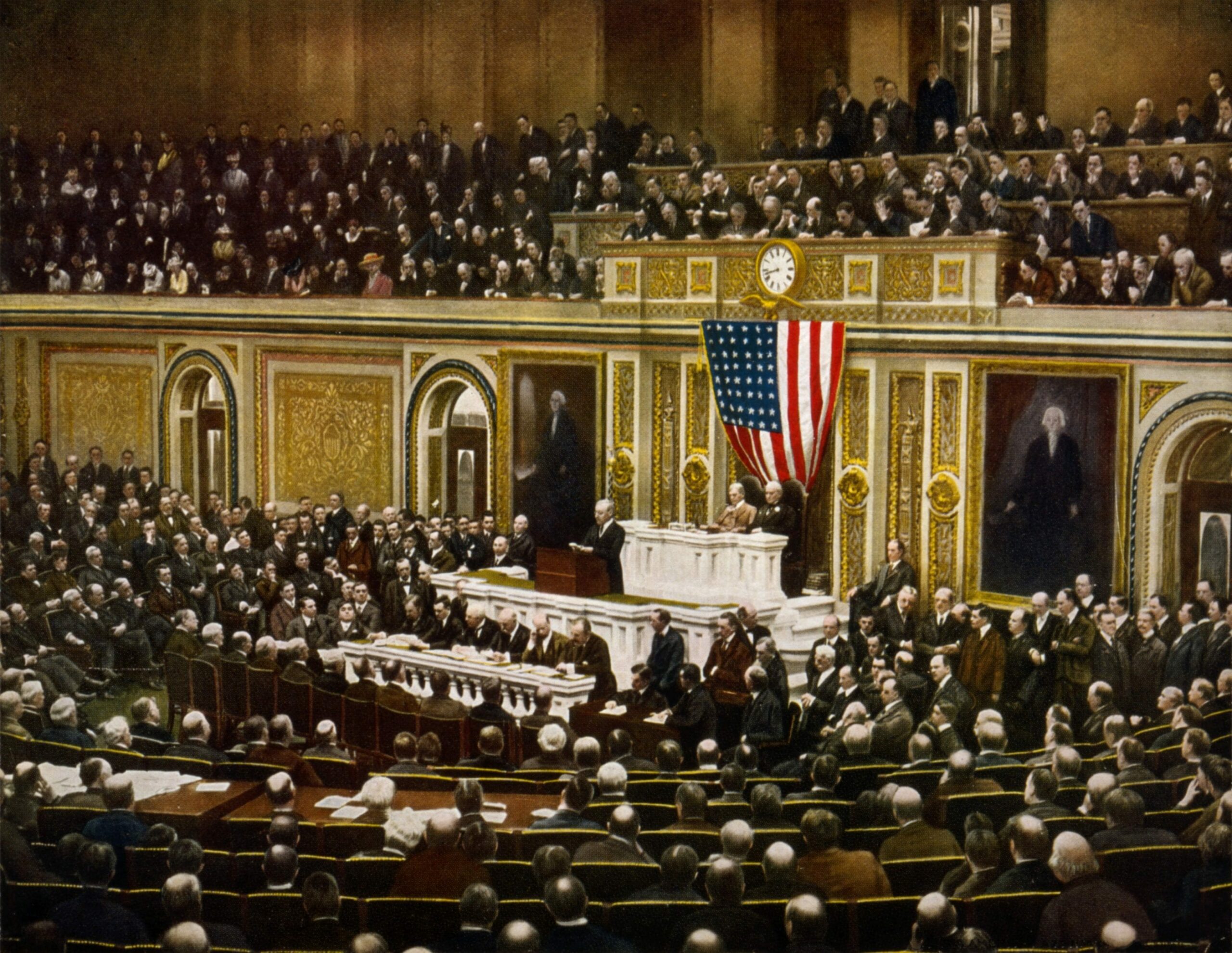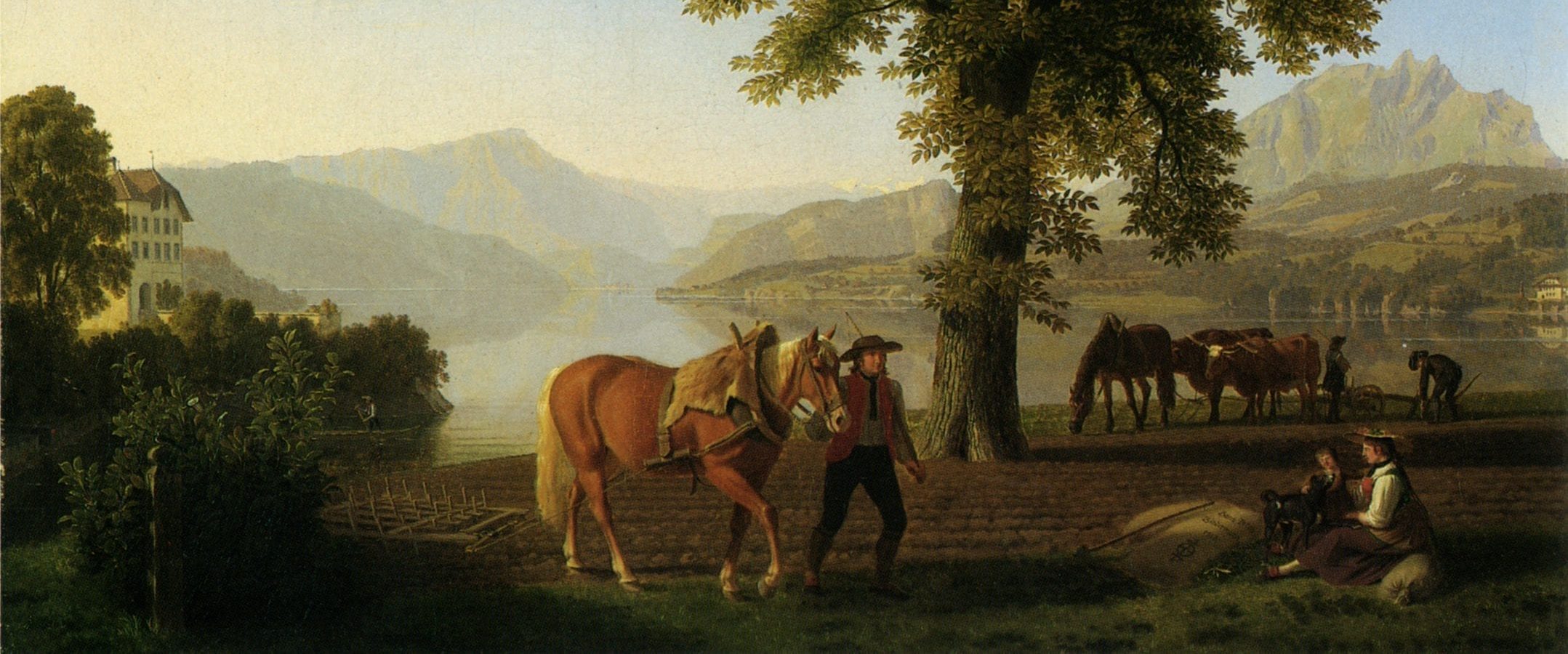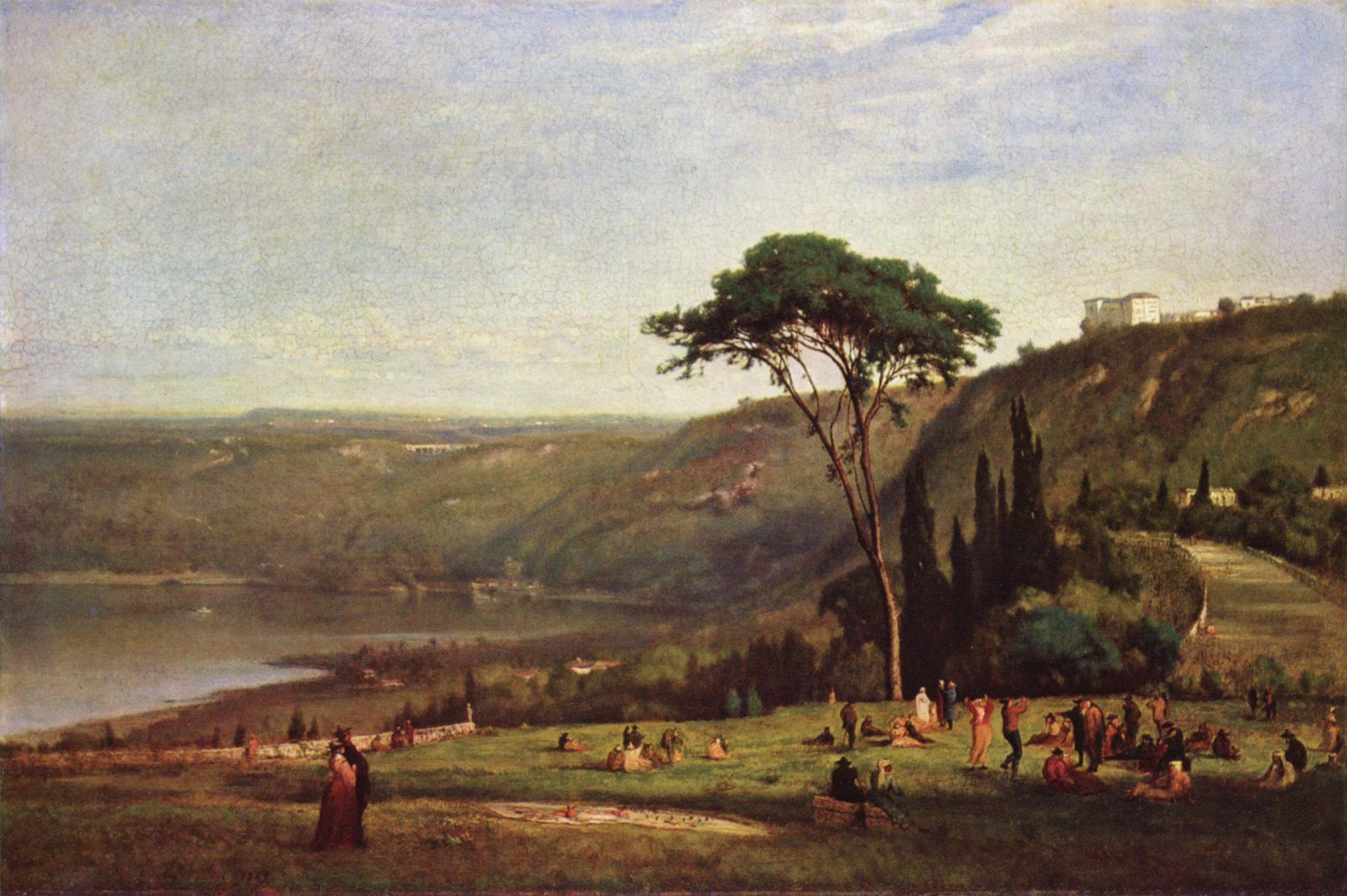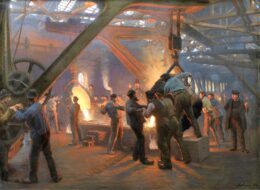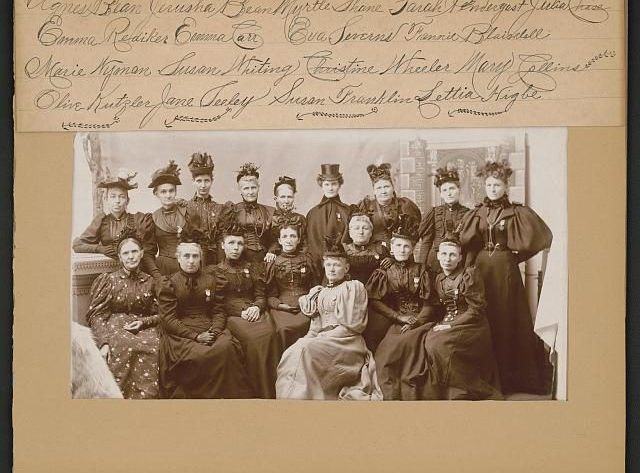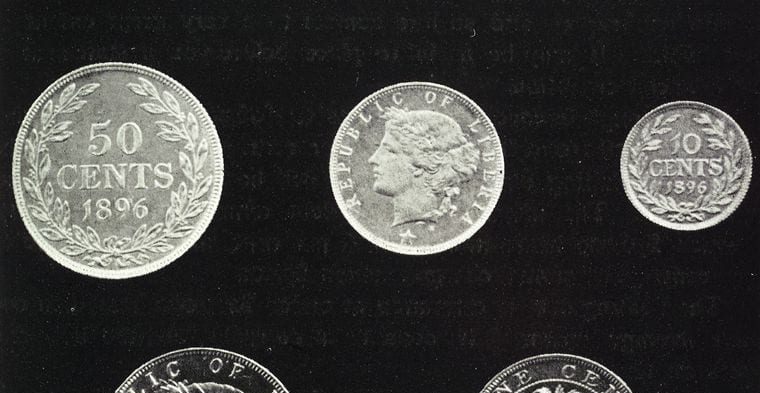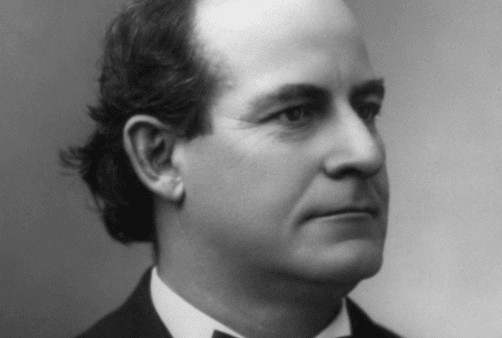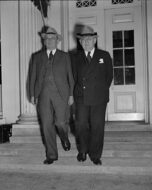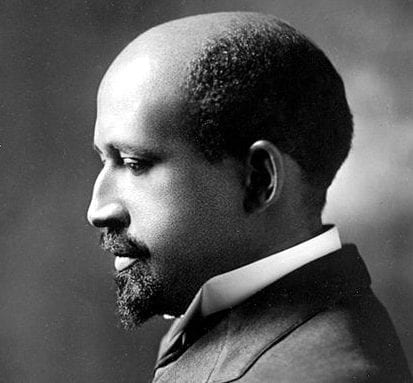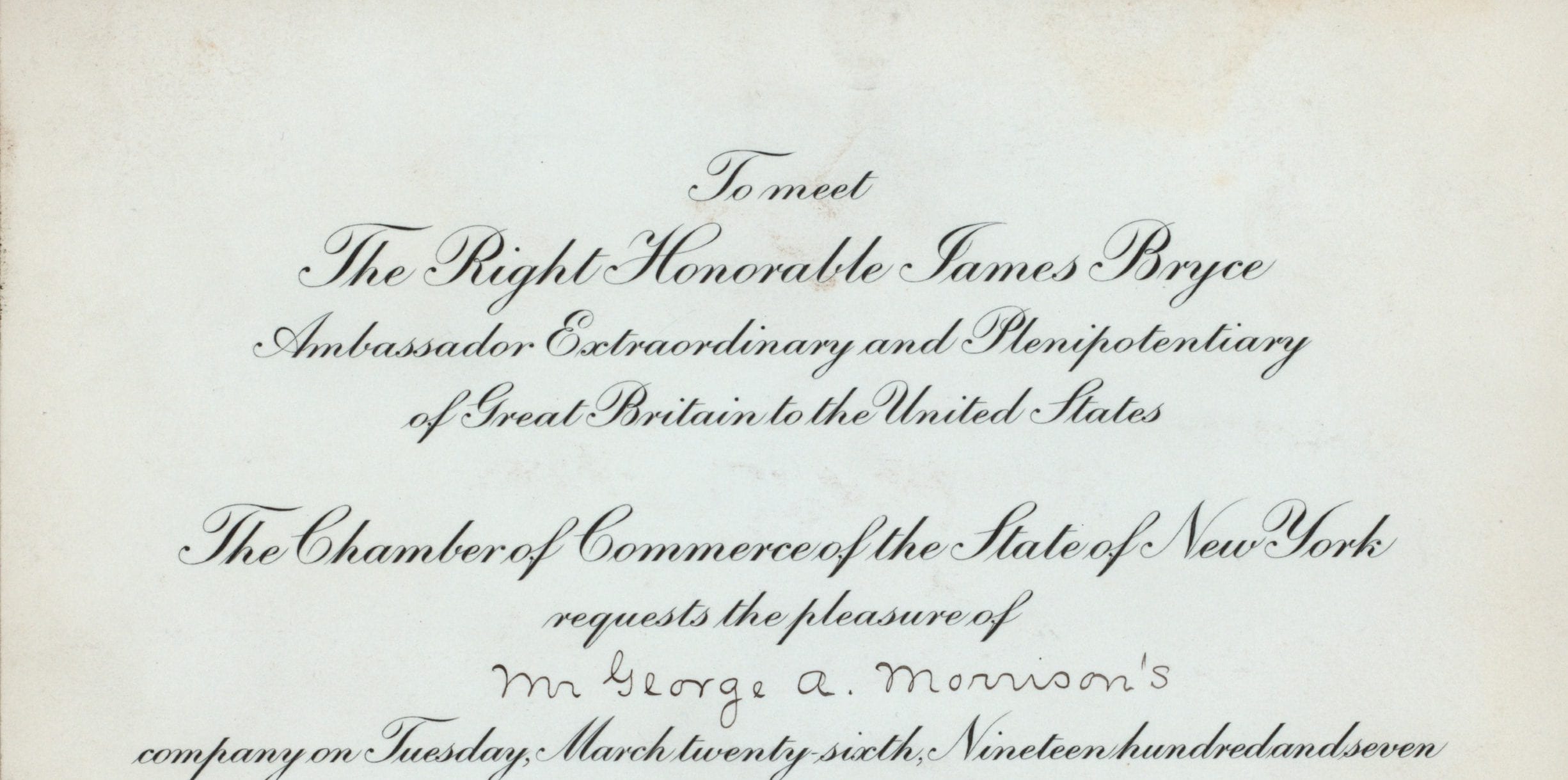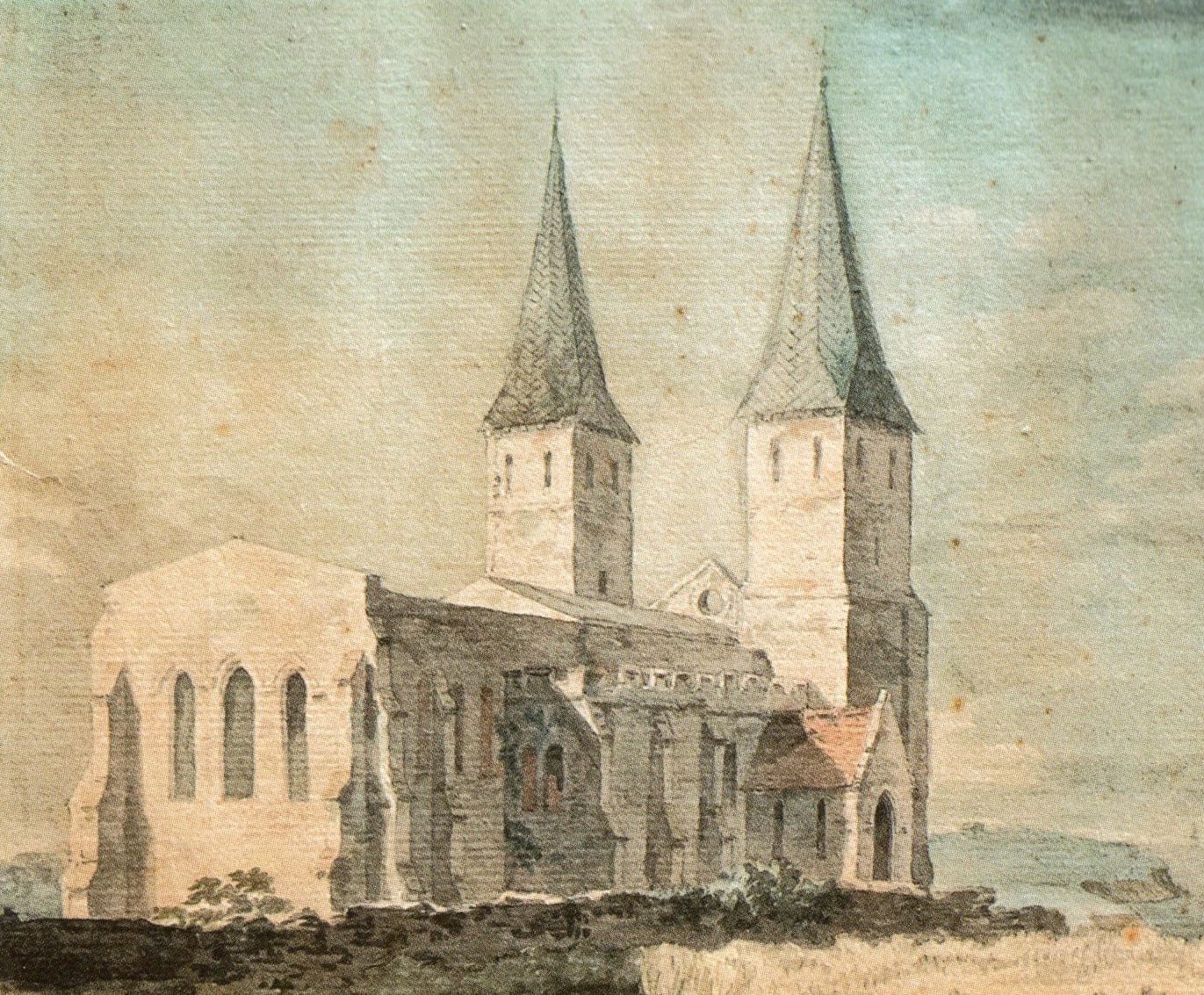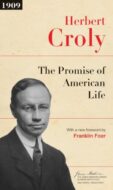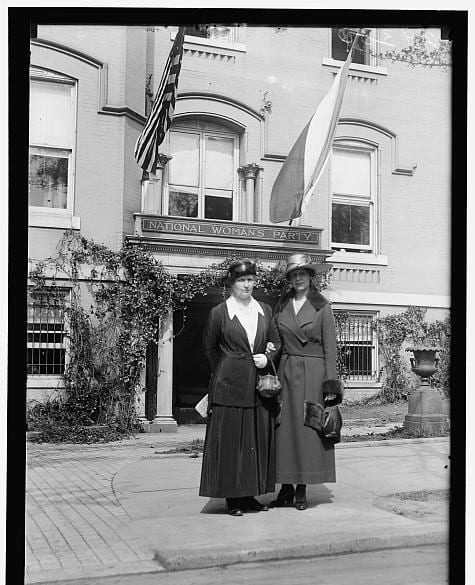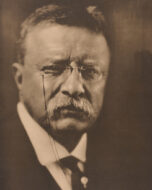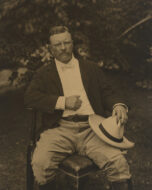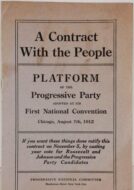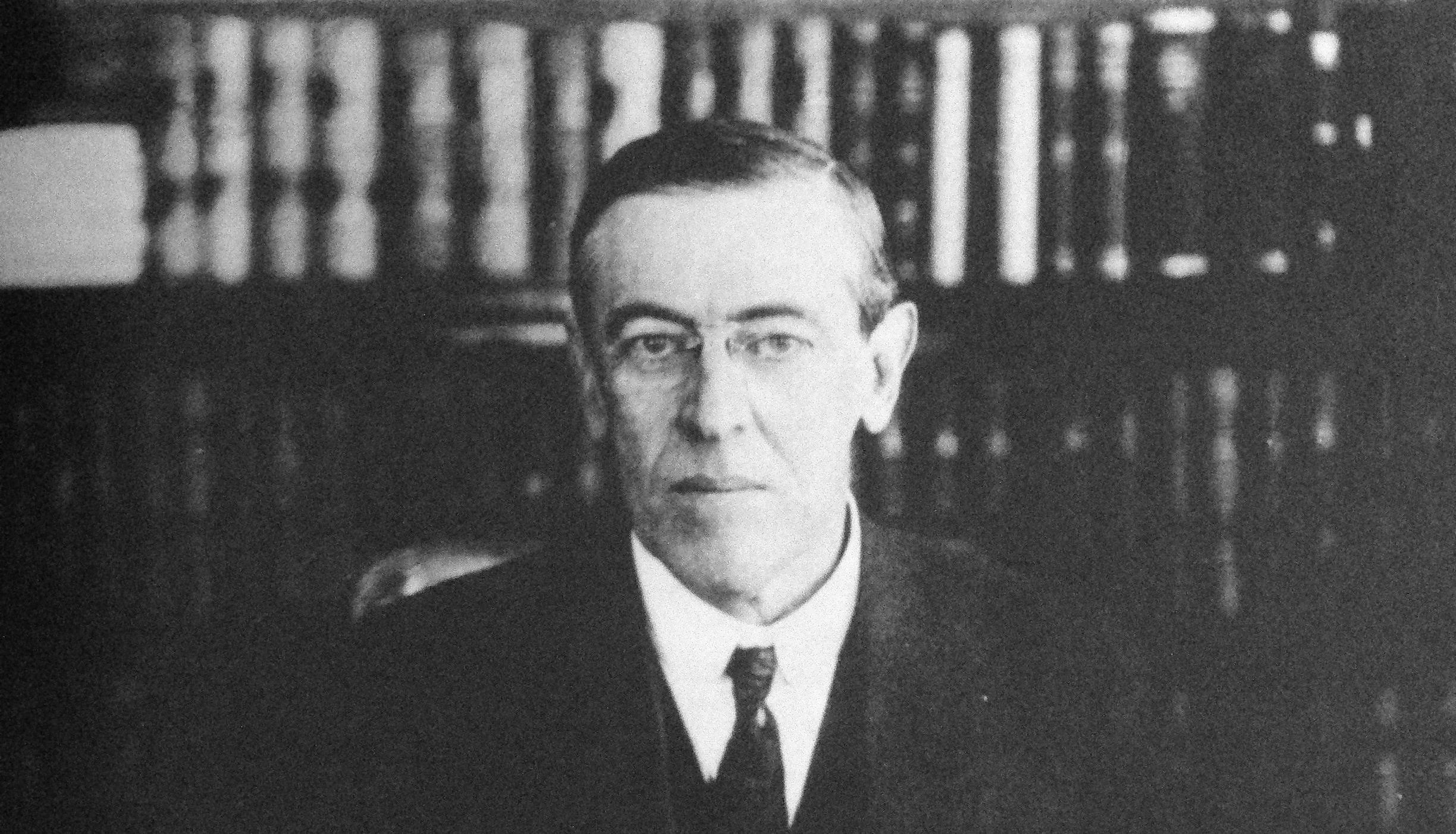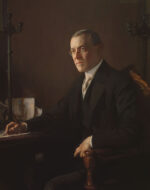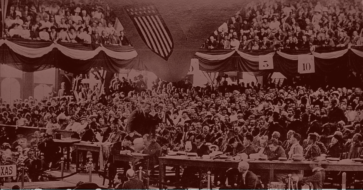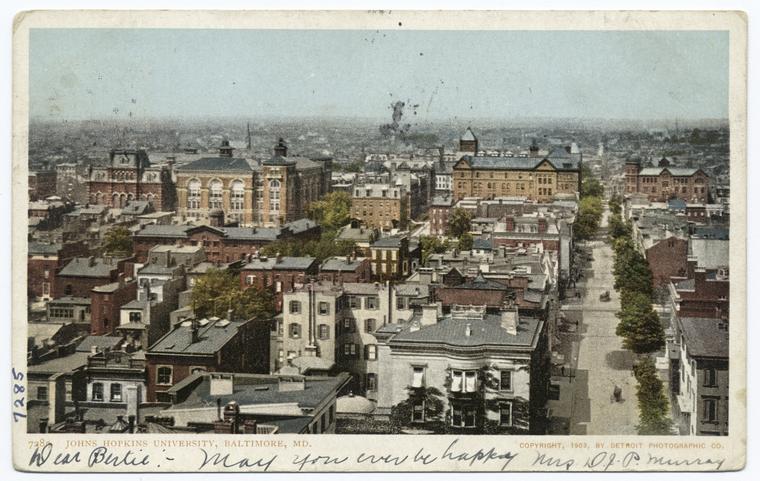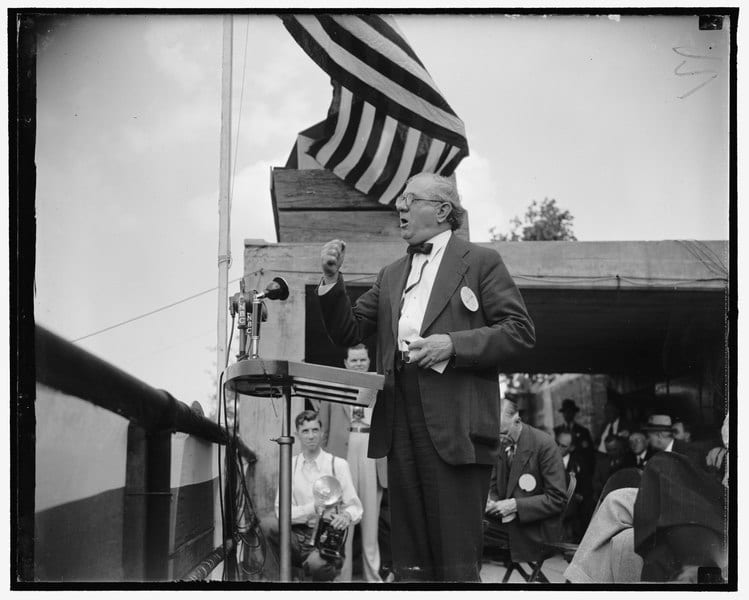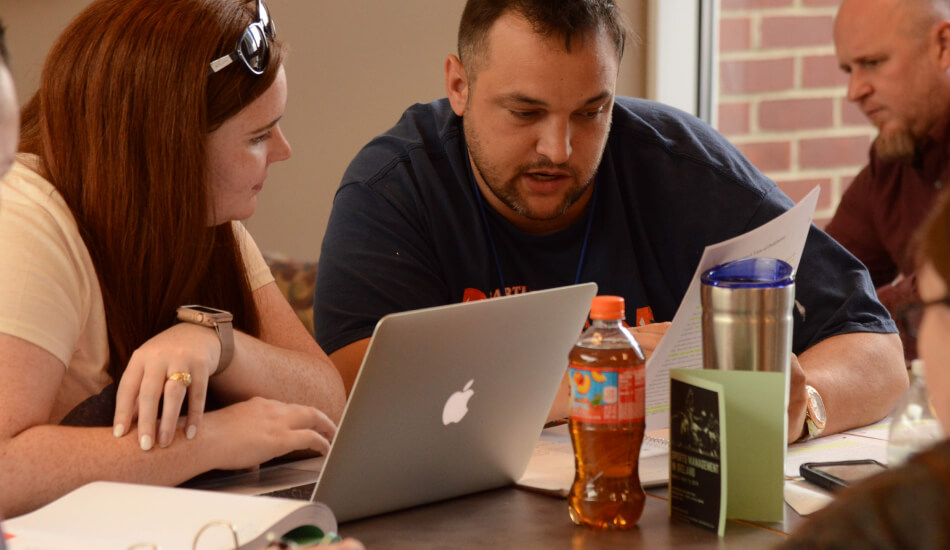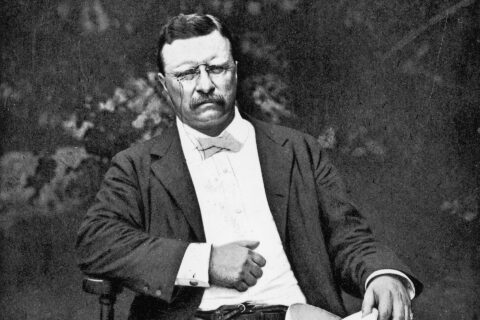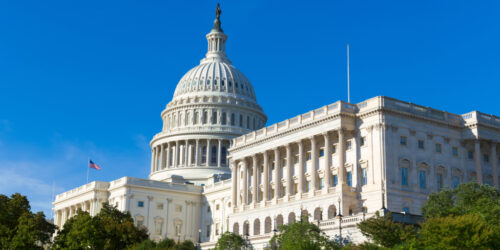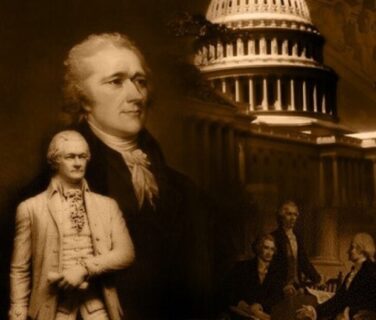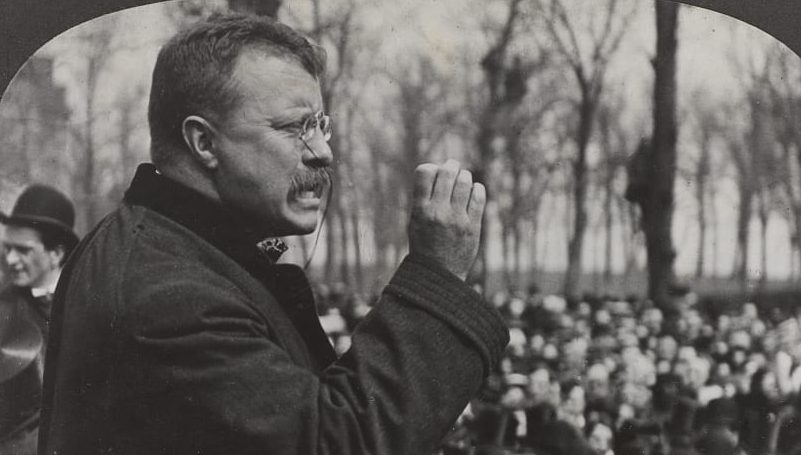
Populists and Progressives
After the Civil War, the challenges presented by a developing industrial economy helped to encourage the American populist and progressive movements of the late nineteenth and early twentieth centuries. The political and economic landscape had changed fundamentally, and many argued that industrialization, technological innovation, urbanization, big business, and large accumulations of wealth threatened equality of opportunity and the common good. Political corruption only added to the problem. Special interests were said to dominate the political process to the benefit of the few and the detriment of the many. Broadly understood, American populism and progressivism sought to respond to these perceived challenges.
The organized populism of late-nineteenth-century America was predominantly an outgrowth of southern and midwestern agrarian movements during the 1870s and 1880s. Cooperative alliances emerged claiming to defend the interests of farmers in the face of railroad expansion, exploitative banking practices, and diminishing crop prices. Of key importance were groups such as the Farmers’ Alliance, the Agricultural Wheel, and the Grange. In the early 1890s, the Farmers’ Alliance and other groups reached out to northeastern labor to form the relatively short-lived Populist (or People’s) Party. Among other things, the new party advocated the regulation and possible public ownership of the railroads, the abolition of national banking, the graduated income tax, reduced tariffs, abandoning the gold standard and embracing free silver, the initiative and referendum, the direct election of U.S. senators, and the eight-hour workday.
The Populist Party reached its zenith when it joined with the Democrats to nominate William Jennings Bryan for president in 1896. While the Democratic Party absorbed Jennings’ defeat and survived, the smaller Populist Party could not, especially when Bryan lost again in 1900. The Populist Party collapsed soon afterward. Various strands of the party were absorbed into other elements of the political landscape, among them an emerging movement we now call progressivism.
The American progressive movement lasted roughly from the early 1890s to the early 1920s, encompassing much more than the political party that sprang up around Theodore Roosevelt in 1912. Yet, as with many such “movements,” it is difficult to reduce progressivism to a single defining concept or motivation. Among turn-of-the century progressives we find a hodgepodge of political and intellectual strains. Under the tent of progressivism one could find the remnants of the populist agrarians, a variety of Christian social activists, temperance advocates and suffragists, labor and industrial reformers, and university Ph.D.s in philosophy and the new behavioral and social sciences, just to name a few. Nevertheless, we might see in the movement some common themes, perhaps the most significant of which resides in the name attached to it—“progressivism.” It might seem obvious, but one key element uniting many of these reformers, politicians, and intellectuals was their shared embrace of the doctrine of Progress with a capital “P.” The particular engine of that progress, be it the internal dynamics of history itself or some notion of biological or social evolution, varied among thinkers. We might say, however, that a progressive is someone who likely adheres to some notion that the human condition, and the human being, are improving, developing, or evolving over time. Through social, political, and economic reform, we not only participate in that progress but might help speed it along. As the “ism” in the name suggests, progressivism is an ideology of progress. Distinguished from philosophy, which contemplates truth for its own sake, ideology tends to investigate and employ ideas for the expressed purpose of practical, political action, be it preservation or change. Whatever particular concerns might separate the various elements of the progressive movement, they were united in their dedication to changing American life in the name of progress.
In general, the progressives sought to reinterpret the American political order by giving the people more direct power over legislation and elected politicians, and in turn, giving administrative experts in state and federal agencies more power to regulate social and economic life. Progressive political scientists such as Woodrow Wilson and Frank Goodnow distinguished politics from administration. Politics might determine the broad ends or purposes of government, but administration, they argued, deals with detailed policy and the particular, technical means by which we secure those ends. Many progressives argued that enlightened administration could be released from the restraints of elections, separation of powers, and checks and balances to help solve political and economic problems. This progressive vision was perhaps best realized a few years later in the form of Franklin Roosevelt’s New Deal. Political scientists sometimes refer to this as the rise of the “administrative state.”
Key to the progressive project was the attempt to regulate certain sectors of the economy and redistribute wealth and private property in the name of “social and industrial justice.” But these policies, many progressives argued, would not be enacted as long as the political process was dominated by powerful special interests and as long as the Constitution presented supposedly antidemocratic obstacles to progressive reform (e.g., representation, a difficult method of constitutional amendment, federalism, separation of powers and checks and balances, and a cumbersome legislative process).
For many, the progressive project required an explicit, direct criticism of the principles of the Declaration of Independence and the U.S. Constitution. Progressive thinkers understood that the natural rights and social contract thinking that informed the Declaration of Independence provided the basis for a limited government constitutionalism that often seemed to frustrate contemporary progressive reform. They often claimed that these founding principles had been swept aside in the march of progressive history or by the evolutionary science of Darwinism. Educated men, they asserted, now knew that there were no transhistorical truths or natural rights that applied to all human beings everywhere and always. Liberty ought not to be seen as natural to man, but as a product of history, a convention, or a dispensation of government. Moreover, if human nature and political wisdom can be improved through historical and scientific progress, perhaps limitations on government were no longer necessary. These admittedly abstract ideas had very practical consequences for America’s political development.
This document volume deviates from more common “textbook” approaches to the study of populism and progressivism in American history, not only because it focuses on primary sources but because it takes ideas seriously. Indeed, the leaders in these movements asked Americans to think about the proper ends and means of American democracy. This is especially true of the progressive movement. Insofar as it is a reaction to the founding, any real understanding of progressivism requires that we place its ideas and institutions in conversation with those of the Founders. We must weigh, balance, and ultimately judge what among their opinions is most reasonable. Necessarily limited in its scope, the present volume can only contribute to part of that dialogue. The reader might begin to construct that dialogue, however, by pairing this volume with others in the Core Documents series, perhaps those on the American Founding and the Constitutional Convention.
I thank David Tucker for editorial advice and assistance. I am also grateful for the advice provided by two anonymous readers. In closing, I should also note that this volume is in part the result of a progressivism course I sometimes teach as a visiting faculty member in Ashland University’s MAHG program (Master of Arts in American History and Government). I wish to thank the students in those classes—most of them teachers—for their conversation, insights, questions, and dedication to learning through primary source documents. I have also benefitted much from other faculty who have taught the course, among them Christopher Burkett, David Alvis, Ronald J. Pestritto, and William Atto. Pestritto and Atto’s excellent and frequently assigned reader on American progressivism originated in their iteration of the course. That volume should be required reading for anyone interested in the principles of American progressivism and is listed among the suggested readings in Appendix C.
Jason R. Jividen
Saint Vincent College
American Populism and a Changing Economy
Henry George, Introduction to Progress and Poverty, 1879
Nelson A. Dunning, “Introductory History,” 1891
James B. Weaver, Excerpts from A Call to Action, 1892
William A. Pefer, “The Mission of the Populist Party,” December 1893
William Jennings Bryan, The “Cross of Gold” Address, July 9, 1896
Marion Butler, Keynote Speech at the Populist National Convention, July 22, 1896
The Political Theory of American Progressivism
Charles E. Merriam, “Recent Tendencies,” 1903
Herbert Croly, Excerpt from The Promise of American Life, 1909
Woodrow Wilson, “What Is Progress?” 1913
Frank J. Goodnow, “The American Conception of Liberty,” 1916
Carl L. Becker, “The Philosophy of the Declaration in the Nineteenth Century,” 1922/1942
John Dewey, “Te Crisis in Liberalism,” 1935
Party Platforms
The Populist Party Platform, July 4, 1892
The Populist Party Platform, July 24, 1896
The Progressive Party Platform, August 7, 1912
Direct Democracy
J. Allen Smith, “The Constitution a Reactionary Document,” 1907
Theodore Roosevelt, “The Right of the People to Rule,” March 20, 1912
Herbert Croly, Progressive Democracy, 1914
The Administrative State
Woodrow Wilson, “The Study of Administration,” June 1887
Woodrow Wilson, “Leaders of Men,” June 17, 1890
Theodore Roosevelt, “The New Nationalism,” August 31, 1910
Progressive Social Reform
Richard T. Ely “The Inheritance of Property,” July 1891
Jane Addams, “The Subjective Necessity for Social Setlements,” 1893
W. E. B. Du Bois, The Niagara Movement’s “Address to the Country,” August 19, 1906
Walter Rauschenbusch, Christianity and the Social Crisis, 1907
Jane Addams, “Why Women Should Vote,” January 1910
W. E. B. Du Bois, Open Letters To Woodrow Wilson, March and
September 1913
For each of the Documents in this collection, we suggest below in section A questions relevant for that document alone and in section B questions that require comparison between documents.
1. Henry George, Progress and Poverty, 1879
A. How does George characterize the relationship between progress and poverty? George says we have based our political system (in which human beings are theoretically equal) on a foundation of social inequality. This, he writes, “is to stand a pyramid on its apex.” What do you take this to mean?
B. George’s thought enjoyed wide influence on the populist and progressive movements. Do you especially see that influence in thinkers such as Ely, Weaver, and Rauschenbusch? What ideas or phrases would you point to in those documents to show George’s influence?
2. Woodrow Wilson, “The Study of Administration,” June 1887
A. What exactly is the difference between politics and administration, according to Wilson? According to Wilson, why are modern democratic governments especially in need of the science of administration? What is the relationship between administration and public opinion?
B. In Wilson’s scheme, might administration require the use of “leaders of men” to shape public opinion, particularly in democratic governments (see Wilson)?
3. Woodrow Wilson, “Leaders of Men,” June 17, 1890
A. What are the key characteristics of a “leader of men,” according to Wilson? Is a true “leader” especially able to shape public opinion through political rhetoric and oratory? Do we routinely expect or demand this “leadership” from politicians today, especially American presidents?
B. William Jennings Bryan and Theodore Roosevelt are often considered two of the more powerful orators in American history. Do they illustrate the sort of rhetorical talents Wilson attributes to “leaders” of men? Why/why not (see also Roosevelt)?
4. Nelson A. Dunning, “Introductory History,” 1891
A. According to Dunning, when and why did agricultural alliances, such as the Grange, begin to emerge in America? What purposes do they serve? Why does Dunning think it especially important, under modern conditions, for farming interests to organize?
B. Both Dunning and Weaver criticize the U.S. Senate. What do they argue?
5. Richard T. Ely, “The Inheritance of Property,” July 1891
A. According to Ely, what general means are available to progressives who want to foster economic reform and a wider distribution of wealth? Of what particular use is the inheritance tax? According to Ely, why are property rights no obstacle to such reforms?
B. To what extent does the inheritance tax find favor in Roosevelt’s New Nationalism and the 1912 Progressive Party Platform?
6. James B. Weaver, A Call to Action, 1892
A. Weaver suggests that a “plutocracy” is trying to control American political and economic life. What is “plutocracy” and what examples does Weaver offer to try to illustrate its existence in the United States?
B. How are Weaver, Addams (See “The Subjective Necessity for Social Settlements” and “Why Women Should Vote“), and Rauschenbusch similar in their appeals to Christian duty as obligating progressive reform?
7. The Populist Party Platform, July 4, 1892
A. What would you identify as the most important ideas and proposals of the 1892 Populist Party Platform? What sorts of political and economic challenges does the party seek to address?
B. In what respects does the 1892 Populist Party Platform anticipate or contribute to some of the features of the 1896 Populist Platform and the 1912 Progressive Party Platform?
8. Jane Addams, “The Subjective Necessity for Social Settlements,” 1893
A. What is the social settlement movement, as it is presented here? What are its purposes? Addams sometimes writes that the Progressive project is to make democracy social, not just political. What do you take this to mean?
B. How are Addams (See “The Subjective Necessity for Social Settlements” and “Why Women Should Vote“), Weaver, and Rauschenbusch similar in their appeals to Christian duty as obligating progressive reform?
9. William A. Peffer, “The Mission of the Populist Party,” December 1893
A. According to Peffer, how is the Populist Party securing the purposes of the Declaration of Independence and the U.S. Constitution? Is he persuasive here? What are the four demands of the Populist Party, according to Peffer?
B. Peffer suggests that “no man ever earned a million dollars.” Do Ely and Roosevelt agree, and how might this influence their ideas on the distribution of wealth?
10. William Jennings Bryan, The “Cross of Gold” Address, July 9, 1896
A. What is the “money question” to which Bryan refers in this speech? What is “bimetallism” and what is Bryan’s stance on it? What does Bryan mean when he insists that mankind shall not be crucified “upon a cross of gold”?
B. Why would you say this speech helped Bryan, a Democrat, secure the Populist Party’s nomination for the presidency in 1896? Consider Butler and the 1896 Populist Party Platform.
11. Marion Butler, Keynote Speech at the Populist National Convention, July 22, 1896
A. According to Butler, how have the Democratic and Republican Parties failed America? What does he say is the “only way to build up” the People’s [Populist] Party for the future?
B. How would you say Butler’s speech helped to convince Populists to back Bryan for the 1896 nomination? Why might Bryan be the most attractive candidate?
12. The Populist Party Platform, July 24, 1896
A. What would you identify as the most important ideas and proposals of the 1896 Populist Party Platform? What sorts of political and economic challenges does the party seek to address? At the end of the platform, what is described as the “pressing issue” of the campaign?
B. In way ways does the 1896 Populist Party Platform build upon the 1892 Platform? Is the 1896 platform distinguished by its special focus on the “financial question” and interparty cooperation?
13. Charles E. Merriam, “Recent Tendencies,” 1903
A. Merriam suggests that progressive social science criticizes many of the political ideas associated with the American founding. Identify a few of those ideas and explain the critiques Merriam presents. How are some progressive theories of liberty indebted to the thinking of John C. Calhoun?
B. How do Wilson (See “The Study of Administration” and “What is Progress?”) and Goodnow each exemplify some of the recent tendencies in progressive scholarship to which Merriam refers? Offer a few examples.
14. W. E. B. Du Bois, The Niagara Movement’s “Address to the Country,” August 19, 1906
A. What is the Niagara movement? What are its “demands,” or purposes? By what means will the movement pursue those ends, according to Du Bois?
B. Of what special importance are the ideas of equal suffrage and black voting in the Niagara movement’s plan and in Du Bois’ letters to Woodrow Wilson?
15. J. Allen Smith, “The Constitution a Reactionary Document,” 1907
A. What does Smith mean in referring to the U.S. Constitution as a “reactionary” document? What is his evidence for this claim? According to Smith, how does this help to explain our frequent frustration with American politics?
B. Compare Smith with Roosevelt. Although both are sympathetic to direct democratic reforms, Roosevelt the politician does not criticize the U.S. Constitution as overtly or strongly as Smith the academic. Why might that be?
16. Walter Rauschenbusch, Christianity and the Social Crisis, 1907
A. What does social and economic equality have to do with Christian morality, according to Rauschenbusch? Rauschenbusch says we have “one kind of constitution on paper, and another system of government in fact.” What does he mean and why does he think this is the case?
B. Compare Rauschenbusch and Goodnow on the courts. According to each, how do the courts protect special privilege?
17. Herbert Croly, The Promise of American Life, 1909
A. Try to explain Croly’s Hamilton-Jefferson dichotomy (a.k.a. the difference between “the “national” and “democratic” traditions) in American political thought. How might this distinction help us understand American political development and the aims of progressivism, according to Croly?
B. Is Croly’s account of the Jeffersonian tradition, and its supposed limitations, another way of criticizing the American individualism that Goodnow and Dewey reject?
18. Jane Addams, “Why Women Should Vote,” January 1910
A. For Addams, why ought women to vote? Who would you say her audience is in this piece and how might that affect the kind of argument she makes?
B. Compare Addams on the role of young, reformist woman in the settlement houses and the role of a mother. How does each contribute to progressive ends?
19. Theodore Roosevelt, “The New Nationalism,” August 31, 1910
A. How would you describe Roosevelt’s New Nationalism? What are its ends? What are its means? Are you convinced that Roosevelt follows in the footsteps of Lincoln here? Why/why not?
B. Do some of the administrative regulations of the New Nationalism serve as a good example of administration as envisioned by Wilson? What do Roosevelt and Ely have to say about property rights and the redistribution of wealth?
20. Theodore Roosevelt, “The Right of the People to Rule,” March 20, 1912
A. What kinds of problems does Roosevelt seek to remedy with methods of more “direct” democracy? What particular methods does he propose?
B. Compare Roosevelt with Croly. Does either appear to believe in the danger of majority tyranny? Why/why not?
21. The Progressive Party Platform, August 7, 1912
A. What would you identify as the most important ideas and proposals of the 1912 Progressive Party Platform? What sorts of political and economic challenges does the party seek to address?
B. In what ways is the Progressive Party Platform indebted to the Populist platforms of 1892 and 1896?
22. Woodrow Wilson, “What Is Progress?” 1913
A. Explain Wilson’s idea of the “Newtonian” and “Darwinian” worldviews. How does he use this distinction to critique the American Founders’ understanding of the Constitution? What does Wilson mean when he says the Declaration of Independence is a practical, rather than a theoretical, document? Why would he want to convince us of this?
B. Compare Wilson with Becker. How does the idea of Darwinism shape their respective arguments?
23. W. E. B. Du Bois, Open Letters To Woodrow Wilson, March and September 1913
A. How would you describe the difference in tone between Du Bois’ March and September letters to President Wilson? Why does Du Bois approach Wilson with guarded optimism in the first letter and express his profound disappointment with the president in the second?
B. What do the challenges described in these letters and in the Niagara Address suggest about the status of black civil rights in the progressive era?
24. Herbert Croly, Progressive Democracy, 1914
A. According to Croly, why is direct (as opposed to representative) democracy more feasible today than in the past? Was the only argument against direct democracy really one of size, technology, etc.? Are there any other reasonable arguments against direct democracy?
B. Compare Croly and Smith. Why does each think the American regime did not originally embrace direct democracy? Are they persuasive?
25. Frank J. Goodnow, “The American Conception of Liberty,” 1916
A. Explain Goodnow’s critique of natural rights and social contract. What is the difference between contemporary American and European conceptions of liberty, according to Goodnow? How has the American conception of liberty affected the way U.S. courts think about property rights and due process?
B. How are Goodnow and Dewey similar in their critique of earlier, Enlightenment Era notions of liberty? Offer a few examples of that similarity.
26. Carl L. Becker, “The Philosophy of the Declaration in the Nineteenth Century,” 1922/1942
A. According to Becker in 1922, to “ask whether the natural rights philosophy of the Declaration of Independence is true or false is essentially a meaningless question.” What is he suggesting here? What is the role of Darwinism in bringing him to this conclusion? In 1942, is the truth of natural rights a seemingly meaningful question once again? Why?
B. Compare Becker and Dewey. Is Dewey’s claim that the truth of natural rights is “historically relative” essentially the same as Becker’s suggestion that it is meaningless to ask whether the natural right principles of the Declaration of Independence are true or false?
27. John Dewey, “The Crisis in Liberalism,” 1935
A. What do you think Dewey means when he refers to a “crisis in liberalism”? Dewey writes that earlier liberals “lacked historic sense and interest,” and failed to see that their own “interpretations of liberty” were “historically conditioned.” What does this mean and how does it supposedly lead to the “crisis” Dewey describes?
B. Compare Dewey and Goodnow on the courts. According to each, how do the courts rely on outdated notions of liberty to protect property? Do they think this a good thing?

